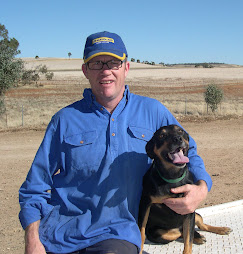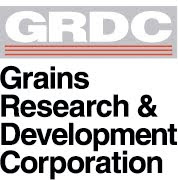Entrance to Uni
Professor João Carlos de Moraes Sá. Juca Sa' for short, agreed to meet us at our hotel in the morning. He gave Nikki and I an excellent full day. We firstly went to the State University of Ponto Grossa where he is a Proffesor. They run two separate farms; one for research and one as a commercial operation. The university has 8000 students and 1100 staff. Working on the farm there is 1 manager, 1 agronomist, 3 techs and 10 workers. In the agronomy they have students mainly from Parana State. They also get a number of post graduates from around the world. Each year Juca runs an intensive 2 week program for invited researchers, scientist and agronomist from developing countries. The invitation comes from CIRAD which is a European organization which aids those countries to become more self-sufficient and replace import foodstuffs. The course has a long title like Juca’s name, Organic Management in Cropping Systems for Carbon Sequestration, Soil Quality, Economic and Environmental Quality
Juca was very keen to show us both farms. He purposely went to the research farm firstly and the research they were doing was to look at rotations and the order of crops within them. They grow both warm season and cold season crops and both legumes and cereals, but no oilseeds. Currently they are working in collaboration with a couple of major agribusiness companies researching cover crops, new chemical formulation and other stuff that Juca did not elaborate on. There was all the usual trials by other professors and staff at the University, which sometimes conflicts with the smooth running of this section of the farm.
At the commercial farm all of the work carried out here was industry best practice and new practices that Juca wants to show to farming community. This farm was as Juca promised. The crops that were in the ground were looking excellent and there were some paddocks just seeded and others were brown, not with dirt/soil but with residue. There was no bare ground other than the roadways.
Juca Looking A His Own Residue
As they receive more rain than us, a hell of a lot more 1500 mm/year, they can grow a multitude of crops and at different times to our single season crops. Juca kept on reminding us that organic matter / biomass was the most important component in the system, this comes from growing quality crops with healthy roots and not taking that residue away in the form of straw, burning or cultivating and not exposing the root material to oxygen which accelerates respiration and loss to the atmosphere.
They grow a couple of cash crops a year and slip in a cover crop to increase biomass to a level above 6 tonnes per hectare as this is how much is used in their system. So Juca wants to exceed this to increase the organic matter in the soil. Juca’s favourite mix of cover crops, are Radish and Black Oats and sometimes some vetch.

Juca and That Bloke in Red Again
This mixture is good as each has a different Carbon to Nitrogen ratio. The ratios are important as it gives a very good idea on how long the residue takes to break down. The higher the Nitrogen component, the quicker the residue breaks down. Vetch = 13.5:1, Radish 16:1, Black Oats 32:1. This type of mixture gives a balance of those nutrients over time.
Three Crops Residue
The crops that had just been sown were coming up in a very even manner. Wheat was sown into three different crop residues; Soybeans, Corn and Cover Crop. A lot of the Soybean residue from 12 months ago had already broken down. Whereas the other two still had a lot of residue covering the soil. Juca was quick to point out that these different rotations need to be managed to stop any bare soil being seen and possibly eroded. All of the commercial farm looked very good. The farmers in the area, of which there is roughly 12000, come to the farm for field days and are in regular contact through newsletters etc. After being out in the paddock we went in to see Jucas laboratory and we met Flohan who is a French post graduate. He is working on new methods to evaluate carbon in all of its different forms in the soil. Juca had set up a display of soil graded into the different size particles of organic matter and of water stable aggregates. The 3 sizes that tillage affects the most are >20mm , 8 – 19mm and 4-8mm. It takes a reasonable amount of time to bring these aggregates back from destruction when a tillage operation is used. These are very important as when these are fully water stable the risk of erosion is lowered dramatically.

Organic Matter through to Small Aggregates
I asked Juca the question “what would be your ideal zero till system?” His response was
1. Be able to cut through a large amount of straw without hairpinning
2. Soil needs to be lazer cut with no soil disturbance and no cutting camber.
3. Seed needs to be placed at ideal depth eg 20mm wheat
4. Double offset disc with a single disc coulter on the front.
Having a Discussion About Precision Planting of Crops Other Than Corn, Sorghum & Soybeans

The Farm's Precision Planter - Nothing Flash But It Does A Good Job
As it always seems to happen whilst walking back to the car we met another researcher. Professor Claudio Purissimo is a weed specialist and in his time going from conventional tillage to zero till he has seen a reduction in in-crop grasses and annuals but has seen an increase in perennial weeds.
In Argentina he has seen a growing resistance to post emergent grass herbicides. This is coming into Brazil when farmers trade illegally over the fence/border.
We had a discussion on GMO crops and how the cost to produce them has risen dramatically. At present you have to buy the seed from the seed company each year at R$600/t and then pay a tech fee on top of that at .42/kg so all up a tonne of grain will cost R$850/tonne. The big companies have access to silo records and if you do not pay the tech fee at purchase (ie, seed from over the border) they are charging 2% of total delivered at the silo and they want to increase this another 2% across all farmers if the yield is above 50bags /ha, as they feel that it is the technology giving the higher yields not the farmers good management. This works out to be another R$500 per truckload. These companies appear to have a huge stranglehold over the farmers and appear to be limiting the farmers ability to make a profit to line their own pockets.
I am pro GM however I have some reservations in that I believe policies need to be put in place to stop companies monopolising the whole process.





